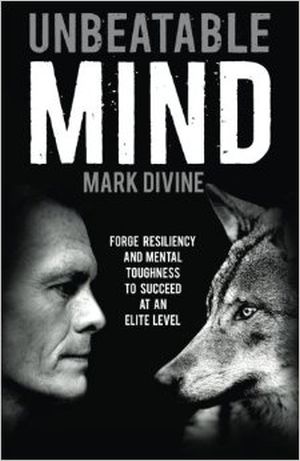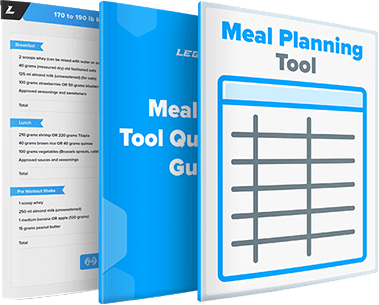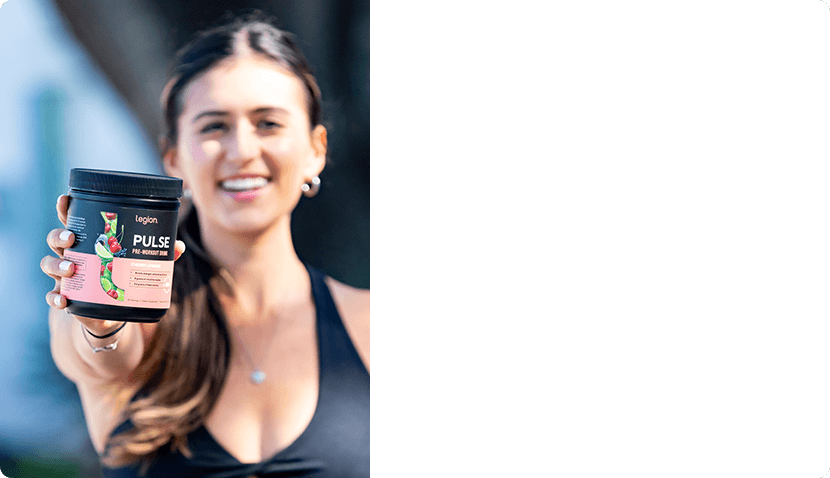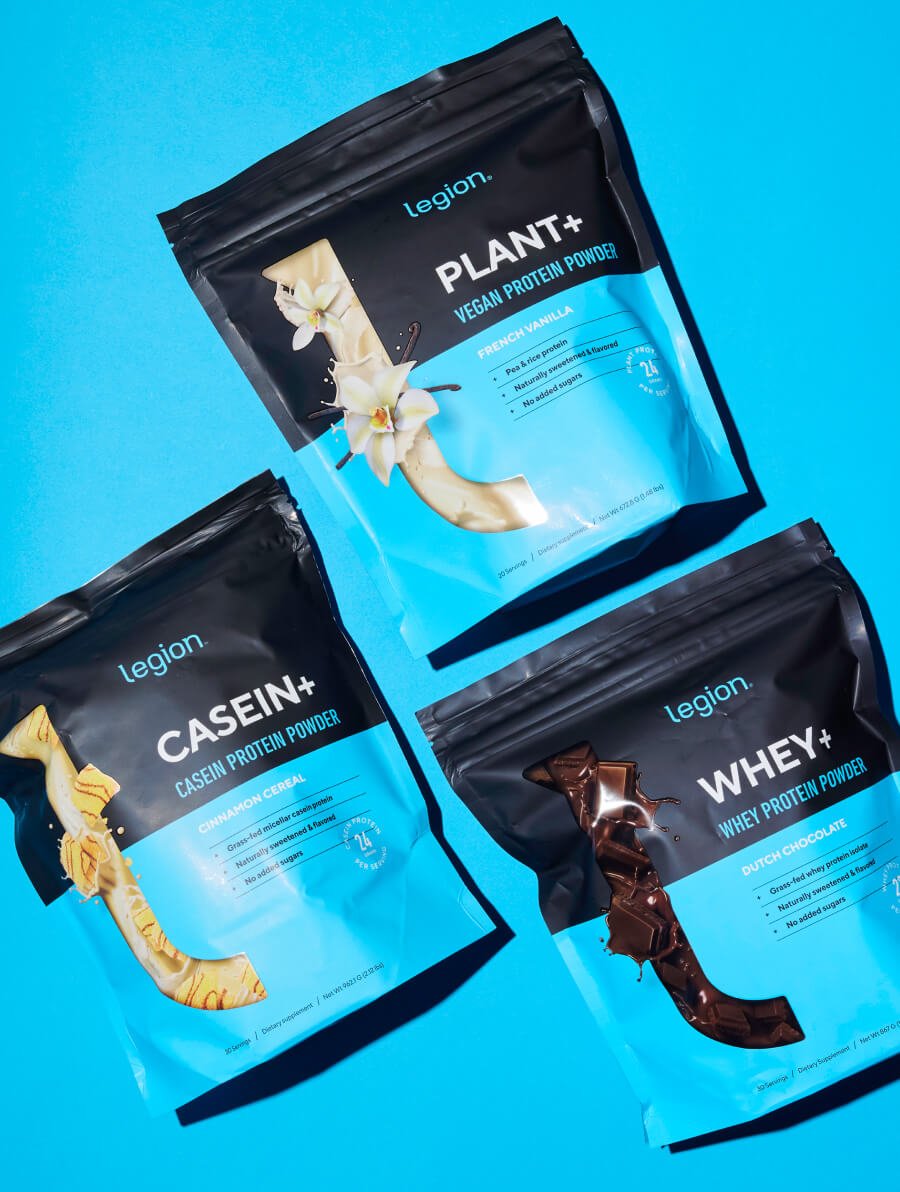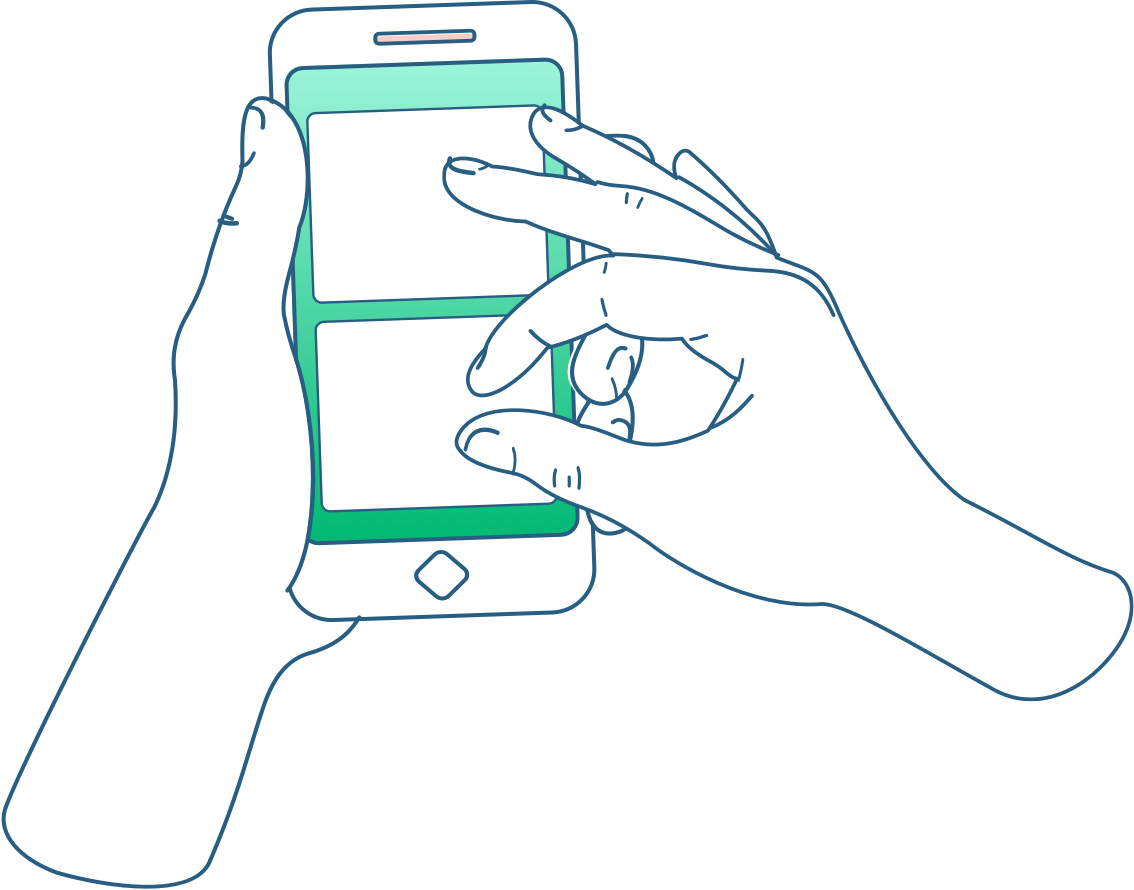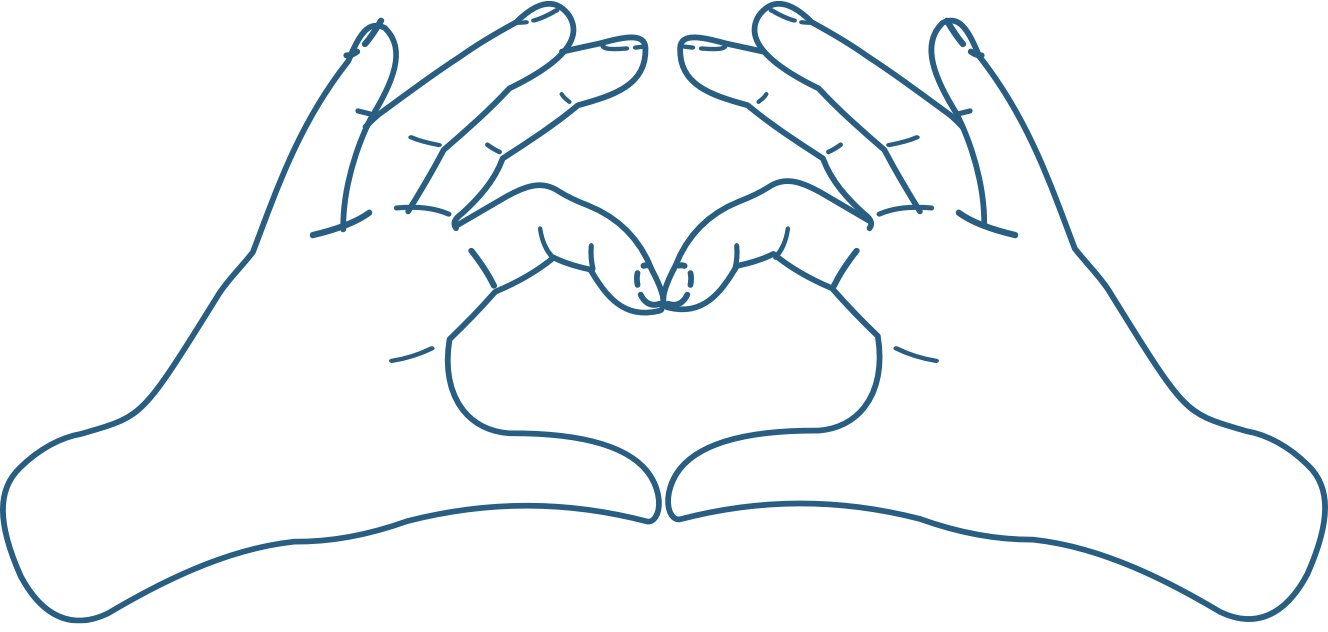In this podcast I interview bestselling author and creator of SEALFIT Mark Divine and we talk about overcoming mental inertia, keeping a mental edge over the long term, getting back on track after falling off the wagon, and more…
ARTICLES RELATED TO THIS PODCAST:
How to Prevent and Recover From Workout Injuries
Warning: You’re Making Life Harder by Not Using Mini-Habits
Workout Motivation: The Power of Habit
Get Workout Motivation: 7 Ways to Get Fired Up
What did you think of this episode? Have anything else to share? Let me know in the comments below!
Transcript:
Mike Matthews: [00:00:00] Hey, it’s Mike. And this podcast is brought to you by my books. Seriously though, it actually is. I make my living as a writer. So as long as I keep selling books, I can keep writing articles over at muscle for life and legion and recording podcasts and videos like this and all that fun stuff. Now I have several books, but the place to start is bigger leaner, stronger.
If you’re a guy and thinner leaner, stronger. If you’re a girl, now these books, they basically teach you everything you need to know about dieting, training, and supplementation to build muscle, lose fat, and look and feel great without having to give up all the foods you love or grind away in the gym every day, doing workouts that you hate.
Now you can find my books everywhere you can buy books online like Amazon, Audible, iBooks, Google Play, Barnes Noble, Kobo, and so forth. And if you’re into audio books like me, you can actually get one of my books for free. One of my audio books for free with a 30 day free trial of Audible. To do that, go to muscleforlife.
com forward slash audio books. That’s [00:01:00] www. muscleforlife. com forward slash audio books. And you can see how to do this. Now, also, if you like my work in general, then I really think you’re going to like what I’m doing with my supplement company, Legion. Now, as you probably know, I’m not a fan of the supplement industry.
I’ve wasted who knows how many thousands of dollars over the years on worthless supplements that really do nothing. And I’ve always had trouble finding products that I actually thought were worth buying and recommending. And basically I had been complaining about this for years, and I decided to finally do something about it and start making my own products.
And not just any products, but really the exact products that I myself have always wanted. So a few of the things that make my supplements unique are one, there are a hundred percent naturally sweetened and flavored to all ingredients are backed by peer reviewed scientific research that you can verify for yourself because on our website, we explain why we’ve chosen each ingredient and we also cite all supporting studies.
So you can go dive in and. Check it out for yourself. Three, all ingredients are also included at [00:02:00] clinically effective dosages, which are the exact dosages used in the studies proving their effectiveness. This is important, of course, because while something like creatine is proven to help improve strength and help you build muscle faster, if you don’t take enough, then you’re not going to see the benefits that are seen in scientific research.
And four, there are no proprietary blends, which means that you know exactly what you’re buying. All our formulations are 100 percent transparent, both with the ingredients and the dosages. So you can learn more about my supplements at www. legionathletics, that’s l e g i o n athletics. com. And if you like what and you want to buy something, Use the coupon code podcast, P O D C A S T.
And you’ll save 10 percent on your order. All right. Thanks again for taking the time to listen to my podcast and let’s get to the show.[00:03:00]
Hey, it’s Mike. And this is an interview that I did with Mark Devine, who is a New York times, bestselling author of several books and who is a Navy SEAL for 11 years. He retired in 2011 as a commander and along the way he founded Navyseals. com, which is a website for gear and kind of information about the seals.
He’s also the founder of Seal Fit, which is an interesting, I could say it’s an exercise. Program, but it’s a bit more than that. It’s more about a lifestyle. He takes the, maybe the fitness aspect of CrossFit type of workouts and then combines it with his own kind of unique views on mental toughness and discipline and drive and determination.
And a lot of the, I guess you could say the kind of classic virtues that that we aspire to, or that we admire and we aspire to develop in ourselves. And I, Mark’s a very interesting guy. He’s lived a very interesting life. He’s seen a lot of [00:04:00] stuff, experienced a lot of stuff.
So I really enjoy getting his take on yeah, overcoming obstacles in life and what it takes to really be effective and what it takes to not just build a body, but build a good life. So let’s get to the interview. I think you’re going to like him. All right. Hey Mark, thanks again for coming by and I had you on the podcast that went over really well, so I appreciate you taking the time to do the interview.
You bet,
Mark Divine: Mike. My pleasure.
Mike Matthews: All right, so let’s just jump right into it. Part of getting fit is not so much the know how. Like a lot of people know what they have to do. You got to control what you’re eating and you got to exercise regularly and so forth. But the idea of making a long term what can appear to be like a radical change of lifestyle is a bit intimidating to many people when they’re first getting into fitness, especially depending on where they’re starting with their bodies, the bigger picture can be overwhelming and can make it hard to start.
What are some strategies that you like for overcoming that initial, inertia, almost what you’re trying to push against what it feels like?
Mark Divine: Sure. I think a lot of it has to do with just how you frame the discussion, [00:05:00] right? Internally. And, keep in mind, I think for everyone listening that nothing.
Value comes without some sort of resistance, right? Even a plane taking off is pushing against the wind until it gets up to a certain speed. And, the forces of gravity are overcome. It’s very similar with training, right? So you’re going to meet resistance and to just appreciate that resistance, appreciate the strength and the confidence that you’re gaining day by day.
But not to not to get frustrated because, shortly down the road that resistance starts to level off and then you begin to cruise, right? I’m sure you experienced that, man. No, then you cruise a new plateau and then you’re gonna have to push harder, meet more resistance to break through to another level.
So a lot of it has to do with framing it in terms of understanding. The process of trying to develop a new training regimen or a new program. You’re going to, you’re going to have to expect that resistance and just to push against it a little bit. And then the second thing is to this is really my philosophy.
We [00:06:00] espouse it. So you’ll fit is that training, is as important to you in life as eating and sleeping. And those three, training, eating, sleeping, provide the foundation for excellence in life. If any one of them are, are weak, then it’s like a, three, like the three legged stool has got one of his legs broken and, you will fall over or you will, be less than you can be.
Let’s put it that way. So just to elevate in your own mind in terms of how you think about training, how you plan your schedule. The people you hang out with, the books you read, that training your body, mind, spirit is every bit as important as, waking up in the morning and putting food in your body and going to bed at night and recovering and getting a nice restful sleep.
Mike Matthews: Yeah. No, I think the airplane metaphor is great and very it just, it gives a, it gives the good. package of that. That is how it is in the beginning. It’s very tough to get up in the air. Then once you’re up and going it’s much easier to stay there. And then it’s also, I totally agree on the point of making your [00:07:00] training as important as everything else.
And you’re eating, you’re resting. And I think part of getting there is you have to do it. It’s hard to, you can’t really. Don’t waste too much time thinking about it because you really, you know what I’m saying, like the experience is so much different than, how you might think it’s going to be.
Mark Divine: I love that. It’s so true. You got to get out of your own way by getting out of your head and just starting, but everybody. experiences some resistance when they enter a workout. So you have a long term resistance that you got to fight against. But even the day to day resistance, it’s just Oh, God, I’m fatigued or you just woke up and I’m not quite ready for this.
But all you got to do is start moving your body. And so what I like to do and I try to teach people is start with the finest movements. And so we start with the breath. We start by deep breathing and that is a physical action that really starts to charge your body up and you know It clears your mind of all the crap and like I don’t really want to do this and I’m not sure I can You know, I’m ready for this and it’s gonna be hard and your mind just gets clear of all that stuff [00:08:00] And then we start with light range of motion drills, which, start to work your joints and get the blood flowing and get the synovial fluid flowing.
And then we start to do a little bit more dynamic. And then next thing you know, we’re into the workout and everyone’s having a great old time. Oh, by the way, it really helps to train with a partner or with a team. And that’s a big thing we push for with SealFit is to find a training team. Some accountability partners and you just go at it together because it’s so much more fun and you get further faster when you have that accountability of the team.
Mike Matthews: Yeah, no, I totally agree. I’ve went long periods working out alone and then I went long periods working out with, one person or multiple people and I’m fine working out alone. I’m still going to do it, but it’s definitely more enjoyable with more people. And then even to your other point there, there’s a con, I ran across it in a blog post somewhere.
I was reading, I don’t know, just jumping through different blogs and there’s this concept I ended up writing about it called mini habits, which speak to what you were talking about before. With just starting with simple little things, but that’s a a viable approach to really anything in life is [00:09:00] you want to start working out.
Don’t overwhelm yourself with, that you’re going to have to be in the gym so many hours every week and you have to do it for the rest of your life and blah, blah, blah. Just start with doing 10 pushups a day. Just that just do 10 push ups a day until that feels comfortable until you know that you can you’re never gonna miss your 10 push ups a day and then maybe you make that 50 a day and then maybe you get in the gym one day a week and then Maybe and by building like that, these little mini habits that you can build up It can become you can really you know Change your entire lifestyle without without getting beaten into without running into the brick wall of resistance that just smashes your face in,
Mark Divine: yeah, no that’s exactly right.
That’s a classic technique of mental toughness. We have four primary techniques for developing mental toughness, which we call the big four. And one of them is micro goals to chunk it down into these really bite sized chunks. And, but all those chunks have to be linked to the broader goal, right?
Otherwise you’re yeah. You could be chunking goals and spinning in circles, so you gotta ensure that you have a big vision of where you want to go, [00:10:00] and then you chunk it down, into these little tiny bites that are actually pretty easy to accomplish, and you feel good about it, and they develop momentum and pretty soon.
You look back and you’re like, holy cow, I’m three quarters of the way to that major goal. And it was easy because I just took this one little bite at a time.
Mike Matthews: Yeah, absolutely. And I think it’s a powerful way to approach things. And I, you, the listeners certain people are maybe. Better in the beginning of taking on bigger chunks than others.
But it doesn’t matter how small you have to start, make it, make it work for you. If you feel you can take on a little bit more, if you could start with 50 pushups a day and start there. No, totally. You
Mark Divine: know what I was talking to someone recently and they work with clients who haven’t done any physical activity in a long period of time.
And what he said was Okay. What we’re going to do is you’re going to get off your butt and you’re going to walk outside to the edge of the, curb. And then if you decide then to turn around and walk back in, that’s a victory. Yeah. Chances are you’re going to turn left and walk down the street, to the next block.
And at that point you can [00:11:00] decide to turn around and come back in. But you may continue, right? And so don’t think, okay, I don’t want to go for a walk, just walk out to the curb. Yep. That was awesome. Yeah,
Mike Matthews: I liked that a lot.
Mark Divine: Because once you’re out there, you’re like, shit, I’ve got this, I might as well go another 20 feet or,
Mike Matthews: yeah, totally there’s I ran across that same kind of concept in this mini app thing where do something for 10 minutes.
It doesn’t matter how much, but at the end of the 10 minutes, if you don’t want to do it anymore, fine, don’t do it, but just give it 10 minutes and chances are when you’re 10 minutes in, you’re gonna be like, ah, it’s not that bad. I might as well do some more. Exactly. Yeah. So that’s getting started and that’s that’s the beginning.
And then there’s staying the course which is a different challenge and requires a bit of grit and mental toughness like you were talking about because yeah, sometimes things go smoothly. And if we’re talking about training, that means that your workouts are, you’re making progress, you’re feeling good, you’re no, no injuries, no, or not even necessary injuries, no nagging problems.
Everything is just rolling. And then sometimes things are not going so well for, whatever random type of things that can happen. Yeah. What do you find helps you keep that mental [00:12:00] edge and just moving through the tough spots and, just being there for the long term?
Mark Divine: Sure. It helps to condition your mind for the longterm. And what I mean by that is to really take an active role in training your mind to be optimistic to have a positive relationship with the work that you’re performing that’s getting you closer to the target. To surround yourself with people who are helping you, right?
And you’re helping them. So you’re serving their needs, but they’re serving your needs by keeping you on target and, motivating you when you feel down and, you’re not quite, up for the task or whatnot. And that’s what we do at SealFit is we try to train those things rather than just talk about them as a platitude.
You say, okay, we’re going to train your mind to be optimistic and positive. And we do that through visualization. We do that through a process that I call positivity. And we do that through harmonizing your autonomic nervous system [00:13:00] through breath control. And those three things right there, actually, they encapsulate the other three of the big four skills of mental toughness and resiliency.
And they work together like a, a conductor, conducting a musical orchestra. Can you give us
Mike Matthews: a couple examples of what are some type of mental drills that a person could do?
Mark Divine: Sure. Okay. When I teach this, I say The bridge into mental control is the breath.
If you’re in a shitstorm, workout or a firefight or something like that, if you’re a warrior there’s really only one thing that you can control, and that’s your breath. And when you’re in control of your breath, then you can control your mind and your emotions. Every emotion is linked to your breath.
A breath pattern and your mental thoughts are actually linked to your breath pattern. So if you’re, if you’re feeling chaotic and you’re breathing through your mouth with short choppy breaths, then you’re going to continue to feel chaotic and your mind’s going to be out of control. As soon as you notice that through, first of all, we train to be able to immediately notice our breath patterns and come back to it like a really deep [00:14:00] nostril breath and that deep nostril breath.
And, immediately starts to take control of our nervous system. So if we lengthen our exhale, we trigger our parasympathetic nervous system, which calms are down, calms ourselves down. If we want to charge up and we’re going to do more like intense inhales and we’re going to hold our breath a little bit and we’re going to do shorter exhales, that’ll charge ourselves up.
But ultimately, what I teach initially is just to do a really balanced breath. I call it box breathing. It’s a ratio of one, one, one, one. What I mean by that is you inhale to a let’s say four count, whichever the count really depends upon your capacity to breathe, which is what we call threshold.
And so for me, I’ll do a breath capacity training or ratio of one, one, one, one, where I’ll inhale for a 10 count, hold my breath for a 10 count, exhale for a 10 count and hold my breath for a 10 count. Most beginners will start with four or three, something like that. And then that ratio. of the inhale, the hold, the exhale, and the exhale hold being the same [00:15:00] balances the sympathetic and parasympathetic nervous system.
And if you imagine, again, back to the, if you’ve been training this and then all of a sudden you’re in this firefight. Again, metaphorically speaking for most of the listeners, but for, the Spec Ops guys, the military guys, that’s very real. You come back to this breath pattern.
Now, if you’re winded, you’re not going to do the holds, or they’re going to be very short. Like inhale, just short hold, and then exhale, short hold. And so the ratio will not matter as much, but what it’ll do is it’ll trigger that same response to balance the nervous system. And also, it provides like a micro meditation.
Most meditations are actually concentration training in that you’re actually focusing on something, whereas ultimately true meditation is not focusing on anything, you’re just absorbed in, presence or, there’s different ways to describe it. So what it becomes is a concentration tool where your mind Collapses to concentrate on the breathing.
Now you’re still aware of everything that’s going around. The Navy still seal is still aware of where the danger is coming from. He’s scanning, looking [00:16:00] for targets, but because he’s got that deep controlled breathing, his mind is able to like radically focus on the breath. It’s like the hook is holding it there and holding the attention and then he can focus on the target.
That’s the first step, is the breath, and it’s like super, super powerful, and if you just practice that alone, you’d have, extraordinary results. So then, what we do is we link the breath to positivity you could start getting your mind, or your breath, breathing under control, but your mind could be like, Holy shit, I’m fucked, this, I’m gonna, I’m gonna die, there’s, we’re outnumbered ten to one, your mind could be like, having this crazy defeatist dialogue.
It’s all that feeding the fear wolf. And the breath, because you start to control your mind, you’re able to witness the dialogue and then you immediately interdict all that negative talk, all that negative and fear based language, and you redirect it to positive and powerful language. And it has a very dramatic energetic effect on your body.
And I have this saying that negativity destroys performance, and it’s so true, and [00:17:00] literally you vibrate at a lower level, your performance starts to degrade, and you literally think yourself into. Failure, yeah So we got to think of anybody
Mike Matthews: that’s played competitive sports has experienced that for sure.
Mark Divine: Sure. Yeah, absolutely. And some people naturally do it based upon like the dialogue that happened in their family, if their parents were really positive and some people fight against it because they’re their own worst nightmare because they grew up with really negative environment, negative people, negative programming.
And if you’re in that category, then this is something you absolutely must, train out of you. And you do it through the repetition of practice, just shooting hoops, you got to practice thinking positively, and then the imagery really is closely linked because, when we speak to ourselves, we also trigger emotions and imagery and it can happen.
The other way around, an emotion can trigger an image and then a thought, or an image can trigger a thought and then an emotion. So they’re really like, three headed, beast. Yeah, all associated. You’ve got to take care of them all,
Mike Matthews: yeah, no, I like that. So [00:18:00] that could be like, bringing it down to the person that’s, Is let’s say they had a they blew their diet or something like that.
Or they missed a couple of workouts or whatever. And they start getting that negative thoughts. And then maybe they start feeling anxiety, anxious about what is this? They don’t want to quit or whatever. Then this is, that’s a simple thing they can do is get their breathing under control and just I guess in a sense, almost forced themselves to just think.
More positive.
Mark Divine: Yeah, we have some drills to the box. Breathing is a drill for positivity. We call it. What dog are you feeding drill? So we said say, okay, listen, just set your alarm to ring every hour and on the hour when it rings Stop what you’re doing and just check in and say, okay am I You know, what’s going through my mind?
Is it positive? Does it feel positive? Is it negative, am I engaged in fear based thinking or gossip or, anything that’s negative? Does it feel negative? Is it pulling me down energetically? And if so, then you go through that process of, okay stop that, stop. Yeah, called an interdiction statement.
You stand up, [00:19:00] take a few deep breaths, do some jumping jacks, smile, because your body gets in the game and gets more positive or more energized. You’re going to feel better about yourself. And then you start talking to yourself. Easy day. I got this, piece of cake. We’re gonna we’re gonna crush this.
Or I’m a good person and, that was a, that was just a minor setback, I’ve got this, we’re going to crush it, whatever dialogue works for you. And then what I’d like to do is I like to my insurance policy is to lock that new mental state in with a, with a jingle or a Jody or a mantra.
And what I used in SEAL training, twenty some odd years ago. I still used to this day and I say it hundreds of times a day and it’s Feeling good looking good ought to be in Hollywood feeling good looking good ought to be in Hollywood And I can have a dialogue like this and that is going, you know playing in my background mind You know like a little record Yeah, it just keeps my mind from going into negative territory because it’s a meaningful statement to me,
Mike Matthews: Yeah, totally.
I like that. So we’re rolling along now and in, getting over the little ups and downs and, but then there are inevitably just people being human or whatever. [00:20:00] They’re the inevitable, just slip ups where completely fall off the wagon, let’s say on a diet or, or an injury happens.
So then you can’t train the way you want to train for a couple of months or a couple of weeks or whatever it is. That stuff. The listener is just saying the listener, you can expect, yeah. I don’t think you necessarily can say that you should expect injury, but you’re going to have, not everything is going to be perfect all the time.
You are going to end up, grossly overeating at some point for a little bit and you’re going to be like you’re going to gain two pounds of fat or something you didn’t want to gain. Or, you’re going to deal with little muscle strains or nagging things that are going to get in the way and be annoying.
So that’s not really the point, but the point is what happens next, what to do in response. So what do you find? You talked about this a little bit, but is there anything else that you can share and what helps you from, because you start it’s avoiding that slippery slope effect of, ah fuck it.
I already, what the hell I already ate the already over eight. Yeah, one day. So I might as well do it again. I might as well do it again or already missed one workout I guess I’ll just miss two more, you know Avoiding that so you can just get back on [00:21:00] track put that stuff behind you and just get rolling again
Mark Divine: Yeah there’s a ton here and we can talk about first of all failure is an event It’s not you.
It’s not a person and in fact, we don’t grow without failure It’s just such an important concept to get is that the only way for us to grow and develop is to fail our way forward and to learn how to do it as fast as possible, right? So SEALs run toward the sound of gunfire and they trip and fall and they realize, okay, that direction is not going to work.
We’ll run toward the sound of gunfire in a slightly different direction. We fail all the time. But those little minor failures we learn from we become learning machines. And so we’re constantly learning how not to do things, how to do things better until we literally fail our way toward overwhelming success.
It’s a radical concept. And we have this saying in the seals that failure is not an option. And a lot of people misunderstand it because they think, Oh yeah, we’re perfectionists. We can’t fail. That’s the opposite. What we mean is that because we’re such we’re so comfortable with [00:22:00] risk and with pushing the envelope and redlining things that we’re always failing.
We look at that failure as just another way to, a way to learn how to do it a little bit better. And we employ what we call the OODA loop. And so this is really cool for your listeners. So as you drive towards success you you receive A setback, right? Let’s say it’s a minor injury. Every time we have a minor injury or any type of injury in our Silva training, we expected the athlete to show up the next day and to train, but we’re going to obviously modify the workout, right?
There’s things you can do practically with any injury unless it’s seriously debilitating. And then we’ll Put you on a training plan to get healthy really quickly, right? The bottom line is that failure is just a simple event that provided valuable information on how you need to adjust your training plan or, some way you were moving improperly, or you were not being very aware.
And, you Drop the kettlebell on your foot or something like that, so it’s something you’re not going to do again. So we learn from it. So the OODA loop is an acronym for observe, orient, [00:23:00] decide, and act. So you observe what happened, you observe your new situation, let’s say I got injured.
I had a, I broke my wrist. This happened to me a few years ago. I broke my wrist on a box jump because I wasn’t really paying attention and when it came down, I slipped off the box and smack my hand on the cement. And so I observed, very quickly that it was broken. I observed that, I wasn’t gonna be able to use my left hand.
Yeah. The next day, I went and got an x ray and sure enough, it was broken, so I took care of that immediate triage. And then I started to reorient myself. So the second O is to orient myself to the new situation. And so my orientation said, okay, broken hand, that means my left hand is out of the game.
But what can I do with one hand? Shit, I can do one hand burpees. I can still row. I can work on my one hand pull ups. I can do a lot of snatches. I’m going to be a little unbalanced while this left arm, heals, but I’m still going to train.
Mike Matthews: Yeah, I did the same thing years ago. I fractured my wrist playing football and it was the same.
I’m like my training is going to be a little bit goofy, but I’m going to keep going, keep
Mark Divine: going. And you heal so much faster. You heal at least twice as fast. I think when you keep going, cause you’re [00:24:00] in the game mentally and you’re feeling good moving the blood and you’re basically, you said you didn’t smell too good though.
Yeah, no kidding. Yeah, neither did mine, but it doesn’t matter, right? So that’s the OODA loop. Then you decide, you, you make a decision. How are you, how am I going to alter my trading plan? Okay, I’m going to do these three things. I’m not going to do those 10. And then you make that decision and then you act on it.
That’s the OODA loop. And it’s super powerful because it allows you to really overcome from Overcome the setbacks very quickly, which is really the essence of resiliency. It’s to fall down seven times, get up eight with a smile on your face, because every time you experience that setback, you observe what happened, you learn from it, you reorient yourself to the new reality, you make a new decision that’s powerful and forceful, it’s going to move you closer to your target, and then you act, and then you just keep on rolling forward until you hit the next, point of resistance.
Mike Matthews: Yeah, I like that because it also, then it lets you disassociate the emotion of failing and push through that quickly and stick to the positive, which is you can keep on moving in the right direction, maybe be a little bit [00:25:00] slower, maybe you have to take a detour, but at least you’re moving as opposed to now you’re stopped and then it’s, then you’re really going to get taken over by the negative of it all.
Okay.
Mark Divine: Absolutely.
Mike Matthews: Yeah. Alright, one last thing I wanted to get your wisdom on is when it comes to getting. And staying healthy and fit the ultimate goal is I think to I guess approach that state of flow I guess psychologists what we’ll call right where you’re energized and you’re focused on your goals And you’re fully enjoying the process and I guess even come back to like you’re saying there’s a bit of a presence There were right you are not you’re not overwhelmed by the bigger picture.
You’re not worried about your past failures. You’re just in it and you’re going. And, based on your story of how you became a Navy SEAL, I suspect, a bit of something about reaching that type of state and I wanted to get your input on it.
Mark Divine: A flow state will happen naturally when you’re highly trained in a skill, let’s say you’re a bodybuilder or you’re, into.
Strength training and you’re highly trained at the movements and strength training and you’re in terrific shape and you put in thousands of [00:26:00] Hours, Yeah And so what happens with when you’re that trained in something is when you actually perform the act and you’re pushing the envelope Let’s say you’re going for a new PR a new benchmark and so that you set the target slightly above your last effort meaning you’re shooting for something you haven’t attained before.
Yeah. So it collapses your focus to everything you’ve got is going into this effort. And your mind literally shuts out all other activity. It brings all that training to bear, so you’re acting with an instinctual intelligence. And you’re reaching for that goal. And in those moments of effort, whether it’s, extraordinary effort on a playing field or, going for new PR and a bench press, you are, you click into this, like this altered state of reality that we call the flow state where you feel this extraordinary, kind of peace, time seems to come under your control or slow down and everything just seems to flow out of you perfectly.
The Japanese have a word called Shibumi, which is effortless perfection, and that’s really a great [00:27:00] word to describe this feeling. So you know what I like to teach in my SEALFIT and Unbeatable Mind programs is that if we make the skill that we perfect our own accelerated learning, Then we can learn to activate this flow state at will.
We don’t have to just hope it shows up at the moment of need, in the act, right? So what I mean by that, instead of spending, you will spend thousands of hours doing something you love to do some sort of skill. What we like to do is spend thousands of hours on the skill of. Basically our own mastery.
And so that’s why what we do is we train every day, not just to be physically strong, but to be mentally alert and focused, emotionally controlled. And, to be able to access the depth and range of our emotions, to be intuitively, present and to tap into our willpower or our warrior spirit.
And we train these things together every day. And when you train in [00:28:00] an integrative fashion like that, where you look at your whole mind body system Mind body spirit system as one whole that can’t be separated into its parts, then all of a sudden you start to unlock this accelerated growth and you begin to be able to manipulate reality so that You can access this flow state very quickly, and the big four skills that I referenced earlier really become the tools that you just immediately click back into the breath, positivity, the visualization, and the micro goals, and you become radically focused in the present moment, and you enter that flow state.
It’s very cool. It takes some training, I have Folks have been working with me for, they experienced this with just three, two to three months of training.
Mike Matthews: Yeah, no, I can relate to that for sure. That a lot of the, there are almost subconscious lessons that you’re going to learn if you are training regularly and you are approaching it with that within the, in the way that you’re talking about, you’re going to learn certain things that it’s going to affect you subconsciously, whether you like it or not.
And you’re going to, you’re going to be taking that into other areas of [00:29:00] your life. When you want to go tackle something else, you know what it’s like to do something with a hundred percent focus on it, a hundred percent intention with, in intention to get somewhere. And yeah, I can definitely relate to that.
Mark Divine: That word is so good because what most people focus on is the attention is the object of what your focus, of where your attention is focused and intention is that internal focus. And so when you merge intention and attention, that’s when you merge subject and object.
And that’s when you experience that flow where there’s no separation between you, the doer and the doing with basically a thought, totally. Thought isn’t interrupting that. So it’s, it feels merged. And that’s what that flow state feels like. It feels like there’s, you’re just doing, you’re not thinking about doing and then doing, you’re just doing and it’s flowing out of you.
Mike Matthews: Yep. And with that, yeah, absolutely. With that comes a lot of, then you build up self confidence to just where you can do it in the gym and then you see you can do it somewhere else in your life. And then. All the sudden things that maybe seemed completely ridiculous or [00:30:00] audacious to you in the past now seem you start to instinctively start breaking those down in the same way of actually, how could you go about that?
You could break it all down here. You could get started on that. So it’s definitely one of the cool things.
Mark Divine: Two bucks, and in six months and I wrote three books in one year and we can run multiple businesses and stuff like that. It’s because we’re, we treat our own selves as a lifelong project of mastery.
And so we’re able to be able to stay radically focused and accomplish a lot more. And everyone’s got this skill. It’s just, you just got to practice it.
Mike Matthews: Yeah, I totally agree. All right. Awesome. Those were the big things I wanted to cover. What are you, so tell me what’s what’s on your plate these days?
I want the listeners to know a bit about what you’re doing and what you have coming up and
Mark Divine: I’m totally excited for 2015. So we’ve got a lot of momentum with seal fit. We got a lot of new events coming out. The events that, you know, yeah. I’m really excited about is our three day Academy where we bring people out to seal fit for three days, and it’s really an entry level Academy, but it doesn’t mean it’s easy, but he stretched the imagination.
It [00:31:00] just means we don’t have the same performance standards is like our other end of the spectrum, which is the coral camp. Our nonstop, hell week, simulation. So we’ve got a lot more of those three days academies. We’ve got five Kikoro camps coming. We’ve got a bunch of 20 X events rolling out, which are essentially 12 hour crucible training events.
And all these are really designed to help you explore your the best potential that we’ve been talking about in this show, and then I’m excited to relaunch the next version or iteration of my Unbeatable Mind book and just finished writing it. And so I’m going to relaunch that in January.
Nice. And I’m writing a new book called Warrior Yoga, which is the integrated training from the yoga perspective that I teach the SEALs and the Special Ops candidates. So that’s Macmillan is publishing that. It’ll be due out in either the end of next year or January of 2016. So lots going on, really fun stuff.
Mike Matthews: Yeah. Awesome. And people can find you and your work at, I guess your main website would be [00:32:00] sealfit. com and then unbeatablemind. com. Those are your two websites, right?
Mark Divine: Those are the two. And, sealfit. com is the more exciting one. We’ve got tons and tons of videos. Great content there, and Unbeatable Mind is our online training academy, which, if someone’s really interested in learning the skills of mental toughness, emotional resiliency, and developing warrior spirit, then just enrolling in the online Unbeatable Mind Academy is an amazing experience, and I have, about 1, 500 to 2, 000 people enrolled, and they love it, and it’s a 12 month Bye bye.
program. It follows on into advanced training after that. But the core is this 12 month program. You get lessons every month and the lessons are rich in content. There’s a word document that I’ve written with each one and then videos and audio and it ties all the philosophy of unbeatable mind.
And I introduced my book together into a training program that is integrative in nature and works on the physical, mental, emotional, intuitional and spiritual aspects of yourself and to develop self mastery and service essentially is the model. It’s very cool.
Mike Matthews: Yeah. That is very cool. Okay. Awesome.
Thanks a lot for taking the [00:33:00] time, Mark. I appreciate it. And you, the listener, definitely go check out Mark’s stuff. I I recommended his books on my website. That’s how I came across him originally. And I like, obviously interesting dude has a lot of insight and very cool. So go check his stuff out.
Thanks, Mike. It’s been a pleasure. Yeah. Hey, it’s Mike again. Hope you liked the podcast. If you did go ahead and subscribe. I put out new episodes every week or two where I talk about all kinds of things related to health and fitness and general wellness. Also head over to my website at www.
muscleforlife. com where you’ll find not only past episodes of the podcast, but you’ll also find a bunch of different articles that I’ve written. I release a new one almost every day actually. I release four to six new articles a week. And you can also find my books and everything else that I’m involved in over at muscleforlife.
com. All right. Thanks again. Bye.
